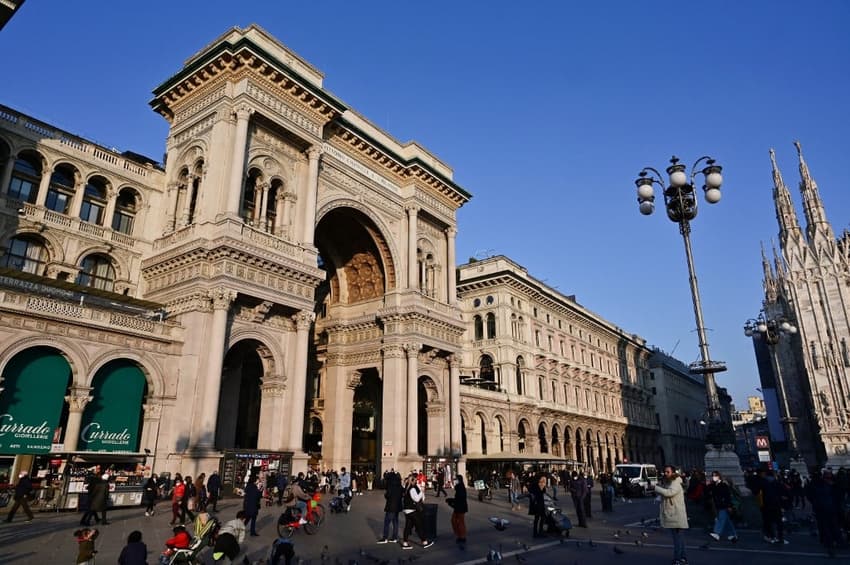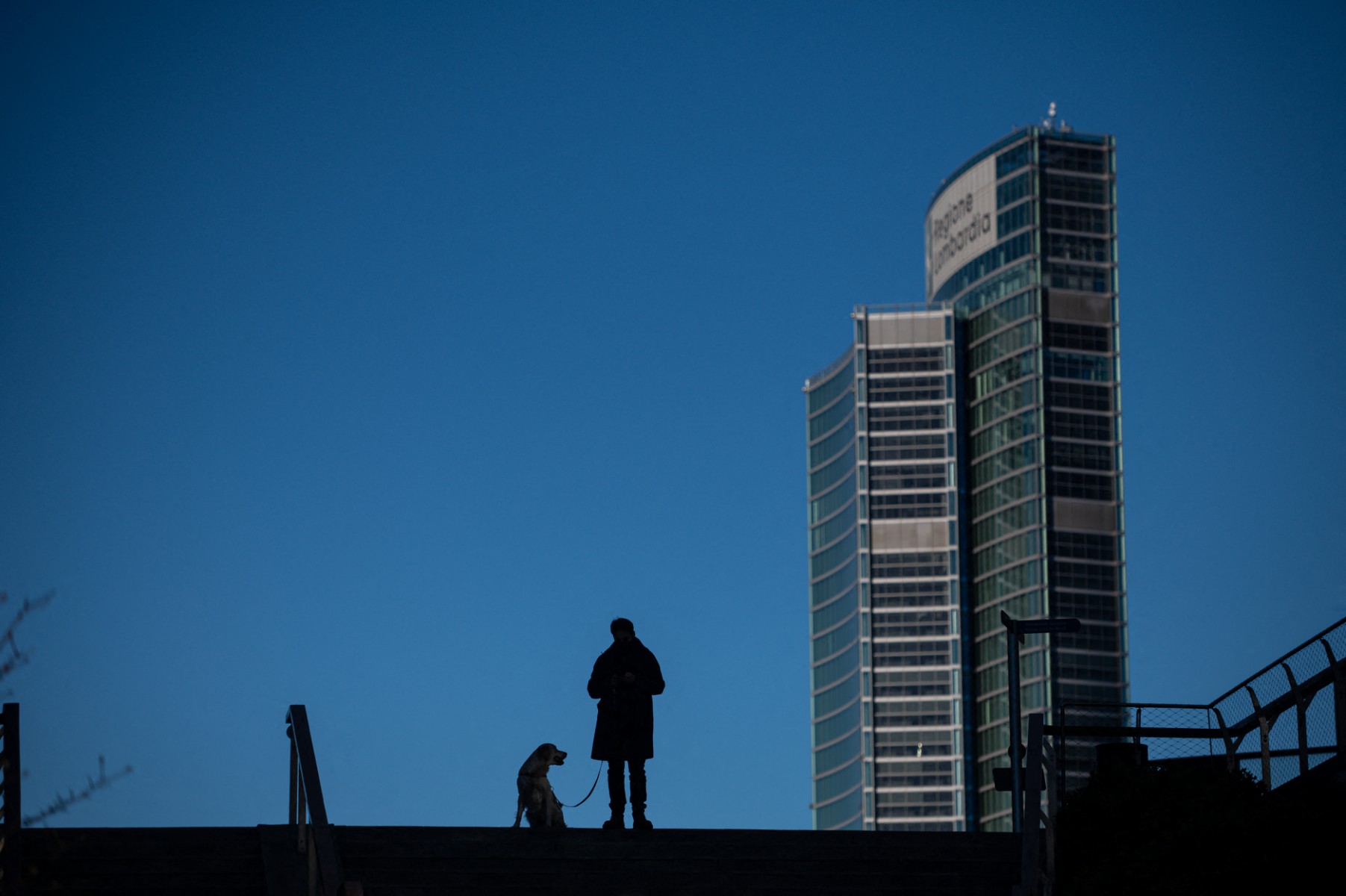Moving to Italy: How much does it cost to live in Milan in 2024?

Milan is one of the most popular Italian cities for foreigners to move to, but it's also among the most expensive. So how much do you really need to live in the northern city?
With its wealth of job opportunities and international appeal, Milan is one of the most popular Italian cities among foreigners.
According to the latest available data, the northern economic powerhouse is home to over 475,000 international residents – that’s around 14.7 percent of the city’s total population.
Milan is also the second-most popular Italian destination among native English speakers after Rome, with UK and US expats leading the pack.
But Milan’s bustling job market and cosmopolitan life come at a price, with the metropolis once again earning the unenviable title of most expensive Italian city to live in last year.
So, how much will you really need to be able to live in Lombardy’s capital?
Rent
Though Milan has long been known for its high rents, living in the city has become possibly even more expensive over the past few years.
Currently, monthly rent comes at an average of around €22 per square metre – that’s almost €6 over the regional average, and some €9 higher than national average.

A man walks his dog in Milan's Porta Nuova district. Photo by Piero CRUCIATTI / AFP
That said, the asking price can be as high as €66 per square metre in the more central areas of the city (Montenapoleone, Quadrilatero della Moda, etc).
According to Numbeo estimates, renting a one-bedroom flat in the city centre will set you back around €1,400 a month on average.
Though prices generally decrease the further away from the centre you go, renting the same type of flat in the outskirts will still come at an average monthly price of just over €900.
READ ALSO: What are the best Milan neighbourhoods for international residents?
Sadly, things aren’t much better for those looking for a single room in a shared flat as this costs an average of €626 (bills excluded) in central Milan.
To see which areas of the city are cheaper when it comes to rent, you can refer to the following online map.
Bills
In the case of most tenancy agreements in Italy, utility bills are not included in the rent.
Though bills are naturally dependent upon a household’s individual expenditure, monthly bollette – these include gas, electricity and water bills plus waste collection fees – for an 85-square-metre flat in Milan are estimated to add up to an average of €252, up by €35 compared to last year.
Italy’s national average sits at around €200 a month.
Groceries
Grocery prices in Milan have increased steadily over the past nine years, with essential goods currently costing the average Milanese household nearly 24 percent more than they did in 2015.
The average Milan family spends around €450 a month on groceries, according to estimates from online investment advisor Moneyfarm.
A list of the most convenient supermarkets in Milan can be downloaded here (click on ‘Scarica lo speciale supermercati’).
Eating out
Milan residents love to dine out, with most locals indulging in a restaurant dinner at least once a week.
As in most major cities, the size of your bill will largely depend not just on the type of restaurant you choose but also on its location.
A three-course meal for two people in a mid-range city restaurant will set you back €80 on average, according to Numbeo estimates, while a regular meal in an inexpensive restaurant comes at around €20 apiece.
READ ALSO: Aperitivo with a view: Six of Milan’s best rooftop bars
A cappuccino in the city costs an average of €1.92 – that’s nearly 40 cents over Italy’s national average (€1.56) – whereas a 0,33-litre bottle of foreign beer costs €5 on average.
Going out, leisure and entertainment
Milan is a bustling city and, as a resident, you’ll hardly ever find yourself wanting for things to do on a weekend.
Once again, the price tag of your leisure activities will be directly dependent upon what you choose to do and where, though prices are generally in line with those of other major Italian cities.

Customers at a bar inside Milan's Prada Foundation in May 2015. Photo by GIUSEPPE CACACE / AFP
For instance, a regular cinema ticket costs around €10, whereas a monthly membership at a sports club comes at an average price of around €60.
Transport
Public transport in Milan is fairly reliable and affordable.
The underground (metropolitana) is by far the fastest way to get around town, though trams and buses are also available.
A monthly urban ticket with ATM, Milan’s public transport operator, costs €39, whereas an annual ticket goes for €330.
But a number of generous discounts are available to low-income residents, people under 30 and students.
Despite the overall reliability and breadth of Milan’s public transport network, like elsewhere in Italy most locals use their own wheels to move around – there are nearly nine registered vehicles for every 10 residents in Milan.
READ ALSO: Milan and Rome ranked 'worst' cities for foreigners to move to - again
Aside from non-negligible fuel-related expenses, parking in Milan is fairly expensive, with tariffs starting from €1.20 an hour in the outskirts but reaching €4.50 an hour in the city centre.
Access to the centre (Area C) is only granted to eco-friendly vehicles and there's a €3 fee for residents or a €7.50 fee for non-residents (up from €5 last year).
Find further information on traffic rules in Milan on the town hall's official web page.
Comments
See Also
With its wealth of job opportunities and international appeal, Milan is one of the most popular Italian cities among foreigners.
According to the latest available data, the northern economic powerhouse is home to over 475,000 international residents – that’s around 14.7 percent of the city’s total population.
Milan is also the second-most popular Italian destination among native English speakers after Rome, with UK and US expats leading the pack.
But Milan’s bustling job market and cosmopolitan life come at a price, with the metropolis once again earning the unenviable title of most expensive Italian city to live in last year.
So, how much will you really need to be able to live in Lombardy’s capital?
Rent
Though Milan has long been known for its high rents, living in the city has become possibly even more expensive over the past few years.
Currently, monthly rent comes at an average of around €22 per square metre – that’s almost €6 over the regional average, and some €9 higher than national average.

That said, the asking price can be as high as €66 per square metre in the more central areas of the city (Montenapoleone, Quadrilatero della Moda, etc).
According to Numbeo estimates, renting a one-bedroom flat in the city centre will set you back around €1,400 a month on average.
Though prices generally decrease the further away from the centre you go, renting the same type of flat in the outskirts will still come at an average monthly price of just over €900.
READ ALSO: What are the best Milan neighbourhoods for international residents?
Sadly, things aren’t much better for those looking for a single room in a shared flat as this costs an average of €626 (bills excluded) in central Milan.
To see which areas of the city are cheaper when it comes to rent, you can refer to the following online map.
Bills
In the case of most tenancy agreements in Italy, utility bills are not included in the rent.
Though bills are naturally dependent upon a household’s individual expenditure, monthly bollette – these include gas, electricity and water bills plus waste collection fees – for an 85-square-metre flat in Milan are estimated to add up to an average of €252, up by €35 compared to last year.
Italy’s national average sits at around €200 a month.
Groceries
Grocery prices in Milan have increased steadily over the past nine years, with essential goods currently costing the average Milanese household nearly 24 percent more than they did in 2015.
The average Milan family spends around €450 a month on groceries, according to estimates from online investment advisor Moneyfarm.
A list of the most convenient supermarkets in Milan can be downloaded here (click on ‘Scarica lo speciale supermercati’).
Eating out
Milan residents love to dine out, with most locals indulging in a restaurant dinner at least once a week.
As in most major cities, the size of your bill will largely depend not just on the type of restaurant you choose but also on its location.
A three-course meal for two people in a mid-range city restaurant will set you back €80 on average, according to Numbeo estimates, while a regular meal in an inexpensive restaurant comes at around €20 apiece.
READ ALSO: Aperitivo with a view: Six of Milan’s best rooftop bars
A cappuccino in the city costs an average of €1.92 – that’s nearly 40 cents over Italy’s national average (€1.56) – whereas a 0,33-litre bottle of foreign beer costs €5 on average.
Going out, leisure and entertainment
Milan is a bustling city and, as a resident, you’ll hardly ever find yourself wanting for things to do on a weekend.
Once again, the price tag of your leisure activities will be directly dependent upon what you choose to do and where, though prices are generally in line with those of other major Italian cities.

For instance, a regular cinema ticket costs around €10, whereas a monthly membership at a sports club comes at an average price of around €60.
Transport
Public transport in Milan is fairly reliable and affordable.
The underground (metropolitana) is by far the fastest way to get around town, though trams and buses are also available.
A monthly urban ticket with ATM, Milan’s public transport operator, costs €39, whereas an annual ticket goes for €330.
But a number of generous discounts are available to low-income residents, people under 30 and students.
Despite the overall reliability and breadth of Milan’s public transport network, like elsewhere in Italy most locals use their own wheels to move around – there are nearly nine registered vehicles for every 10 residents in Milan.
READ ALSO: Milan and Rome ranked 'worst' cities for foreigners to move to - again
Aside from non-negligible fuel-related expenses, parking in Milan is fairly expensive, with tariffs starting from €1.20 an hour in the outskirts but reaching €4.50 an hour in the city centre.
Access to the centre (Area C) is only granted to eco-friendly vehicles and there's a €3 fee for residents or a €7.50 fee for non-residents (up from €5 last year).
Find further information on traffic rules in Milan on the town hall's official web page.
Join the conversation in our comments section below. Share your own views and experience and if you have a question or suggestion for our journalists then email us at [email protected].
Please keep comments civil, constructive and on topic – and make sure to read our terms of use before getting involved.
Please log in here to leave a comment.